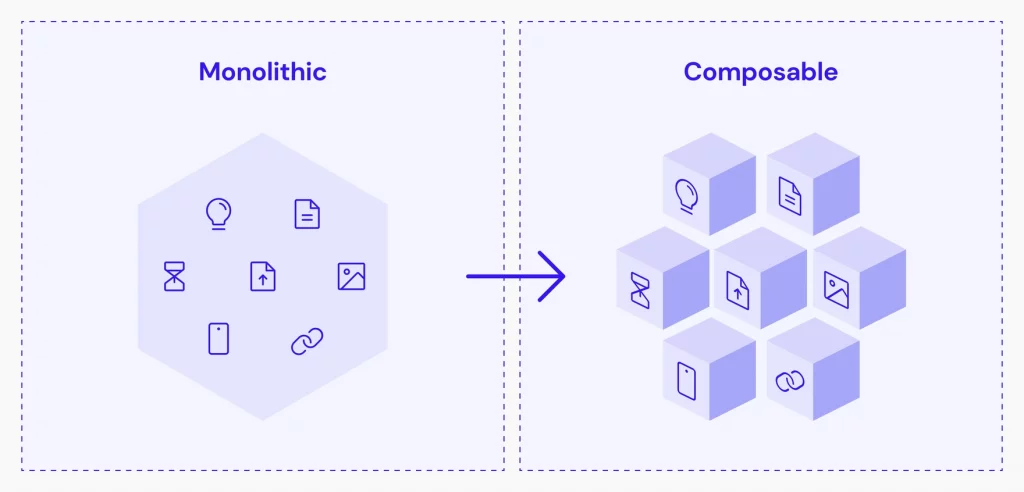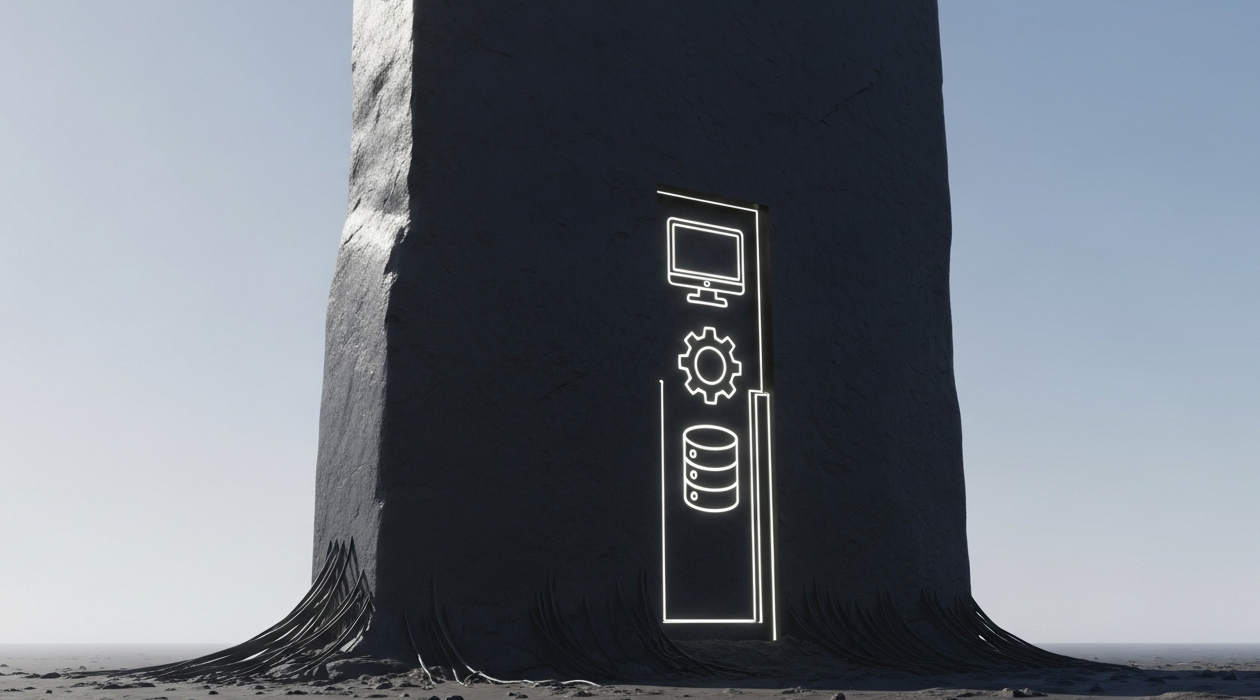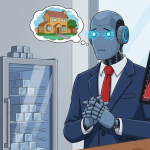Your Tech Stack is a Cage. Composable Architecture is the Key
Read Time: 7 Minutes
Summary
For too long, design and user experience have been forced to work within the lines drawn by rigid technology. We’ve treated the tech stack as a black box—a problem for other people to solve. This article argues that this era is over. It breaks down the shift from limiting monolithic systems to liberating composable architectures (MACH) and explains why a deep understanding of this technology is no longer a “nice-to-have” for designers and UX leaders, but the essential skill for building the future.
Your Tech Stack is a Cage. Composable Architecture is the Key.
You are told to design within the lines.
To accept the constraints. To work with what you are given. To treat the technology that powers your work as an immovable object, a set of rules you must simply follow.
That is a myth. A dangerous one.
For years, we, as designers, have operated at a distance from our digital foundations. The tech stack was the developer’s problem. A mysterious engine room we weren’t supposed to enter. This way of thinking is not just outdated; it is a career-limiting mistake that is actively capping your potential and the potential of your team.
The single biggest thing holding your best ideas hostage isn’t a lack of creativity. It’s your architecture.
The Monolithic Prison
For decades, the digital world was built on the monolith.
The name says it all.

Imagine a giant, solid block of stone. The front-end—the beautiful, intuitive interface you design—and the back-end—the databases, the business logic, the commerce engine—were all fused together. Inseparable.
This had its purpose in a simpler time. It was predictable. Stable.
It was also a creative cage.
We have all been in the meeting. The one where a brilliant, user-centric idea is shot down with a single, tired phrase: “That’s too hard to implement.”
That phrase was a direct symptom of monolithic architecture. It created a world where the technology dictated the user experience, not the other way around. Changing a simple checkout flow was a monumental task because one small crack could threaten the entire structure.
Innovation was slow. Risk was high. Design was a layer of polish, not a foundational element.
What is Composable Architecture? (And Why Every Designer Should Care)
Then we learned to take the block of stone apart.
We learned to build with advanced, interconnected LEGO bricks instead.

This is the world of composable architecture.
At its heart, the concept is simple. Instead of one giant, all-in-one system, you “compose” your technology stack by picking and choosing the best tool for each specific job. The best search tool from one company, then a payment gateway from another. The best content management system (CMS) is from a third.
You stop being a decorator of a pre-built house and become the architect of the entire estate
Desi – i3lance UX
This is made possible by two core principles:
- Headless: This means we cut the “head” (the front-end user interface) clean off from the “body” (the back-end logic and data). They are now decoupled, free from each other.
- APIs (Application Programming Interfaces): These are the universal connectors. They are the flexible channels that allow all your best-in-class services in the back-end to talk to any front-end you can dream of.
This is the foundation of the MACH Alliance standard—a movement advocating for technology that is Microservices-based, API-first, Cloud-Native, and Headless.
Why does this matter to you as a designer, whether you lead a team of twenty or you are a team of one?
Because the cage is gone. The constraints have been shattered. The question is no longer “What does the template allow?” The question is now, “What is the absolute best experience for our user, right here, right now?” You have the freedom to design that perfect experience for a website, a mobile app, an in-store kiosk, or a voice assistant, all powered by the same smart, flexible engine.
This isn’t a technical upgrade. It’s a creative liberation.
Prefer to Watch?
This entire topic is a game-changer for design leaders. I break it all down in a 12-minute deep dive on my YouTube channel.
For more content on bridging the gap between design, technology, and business strategy, check out the rest of my channel: i3lanceUX on YouTube
The Four Superpowers of the Tech-Fluent Leader
If you lead a team, your obsession with this new architecture is no longer optional. It is the key that unlocks four transformative superpowers.
1. You Will Build Bridges, Not Walls.
The historic friction between design and engineering comes from a place of mutual ignorance. When you don’t understand the fundamentals of your stack, every technical “no” feels arbitrary. When you do, the conversation changes. You move from wishes to strategic questions. You build a bridge of trust so strong that the “us vs. them” mindset evaporates, replaced by a unified “we.”
2. You Will Design Universes, Not Websites.
The monolith trapped us into designing for single channels. A composable stack frees you to be a true omnichannel experience architect. Meaning your imagination can run wild because you see the technology not as a box, but as a palette of capabilities. You can ask the questions others wouldn’t even think of, orchestrating seamless journeys across every touchpoint.
3. You Will Move at the Speed of Ideas.
The soul-crushing waiting is over. Decoupled systems mean your teams can work in parallel. Front-end can rapidly prototype with mock data while the back-end is being built. A/B testing a new homepage becomes a minor task, not a major project. You stop being a bottleneck and become an accelerator for the entire business.
4. You Will Speak the Language of Value.
We have fought for a “seat at the table” for decades. Understanding the tech stack is how you finally claim it. You can now translate every design decision into the language of the C-suite: time, money, risk, and opportunity. You stop being a decorator of a pre-built house and become the architect of the entire estate—a strategic leader who connects every pixel to the bottom line.
The Future is Composable. Your Leadership Must Be, Too.
The shift from monolithic to composable is the single biggest change to digital creation in a generation. It is reshaping our roles, our processes, and our potential.
The era of the tech-agnostic designer is over. And it is a relic of a time when our tools were more limited.
The leaders—and creators—who define the next decade will be the ones who see the tech stack not as a constraint, but as their most powerful creative medium. They will understand the technology so deeply that they can tell their teams and their CEO exactly where the new lines need to be drawn.
The future is flexible. It is modular. It is composable.
The only question is, are you ready to build it?
References
- MACH Alliance: The Power of Headless Commerce
- Salesforce: A Guide to Composable Commerce


